At the start of the new year I’ve begun to consider plants that I can’t live without this spring, and again the list must exclude trees or large evergreens. After more than twenty years gardening this one acre plot there is little space available beyond tucking a small shrub or perennial here and there, and certainly insufficient area for additional trees, no matter how dwarf.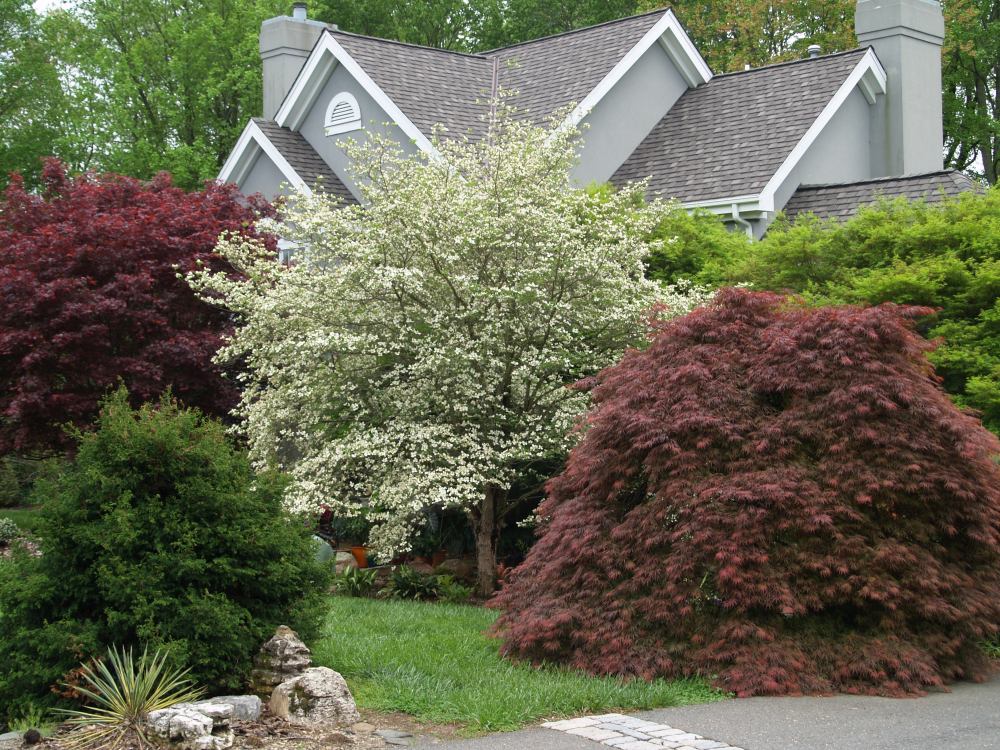
The front garden (above) is largely consumed by a large purple leafed beech, several dogwoods, Japanese maples, and magnolias so that there is sparse sunlight available for any but shade loving perennials. The rear garden (below) is more heavily planted, a jungle of assorted Japanese maples, evergreens, and flowering and weeping trees. As I have added to the garden through the years I have first planted trees as focal points, and then arranged the garden around them. I don’t regret the results for a moment, but there are many trees that I crave.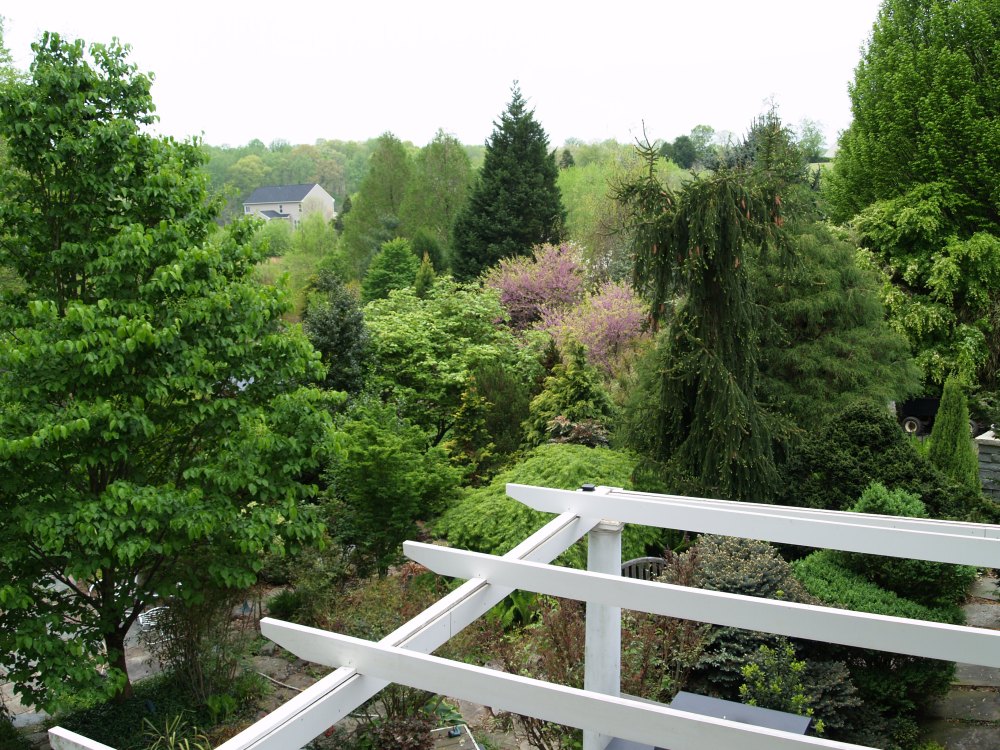
If space were not an issue I would be happy to plant another handful of Japanese maple cultivars, with many hundreds to choose from. I cannot imagine having too many of such a splendid tree. There are twenty or more maples in the garden, red leafed, yellow, green, and those with variegated foliage, tall growers and short, and each is treasured.
Though difficult to find in a reasonable size, a Dove tree (Davidia involucrata) would be delightful, though there is barely twenty inches to cram a plant into, much less twenty feet. I am quite certain that if I were to start the garden anew, I would require a Dove tree, no matter how small and difficult to obtain, and knowing that I’d likely be dead and gone before it reached maturity.
Armed with a bulldozer to wipe the slate clean (and an unlimited budget to play to my heart’s content), I would joyfully keep the native dogwoods (Cornus florida), which are wonderful throughout the year with spring blooms, brilliant autumn foliage, and bright red berries. Also, I’d steer the dozer to preserve the Chinese dogwoods (Cornus kousa) and Rutgers’ hybrids (‘Stellar Pink’, above), particularly the hybrid ‘Venus’ with eight inch white blooms in mid spring.
To find space to shoehorn the lovely Persian Witch Hazel (Parrotia persica) into the garden I’d reluctantly consider giving up one of the flowering cherries, but only the double pink weeping cherry that was mangled in a storm a few years back. Banish the thought that even one of the crapemyrtles (Lagerstroemia, below) will be harmed. If more space were available, I would be overjoyed with the addition of another, or three. 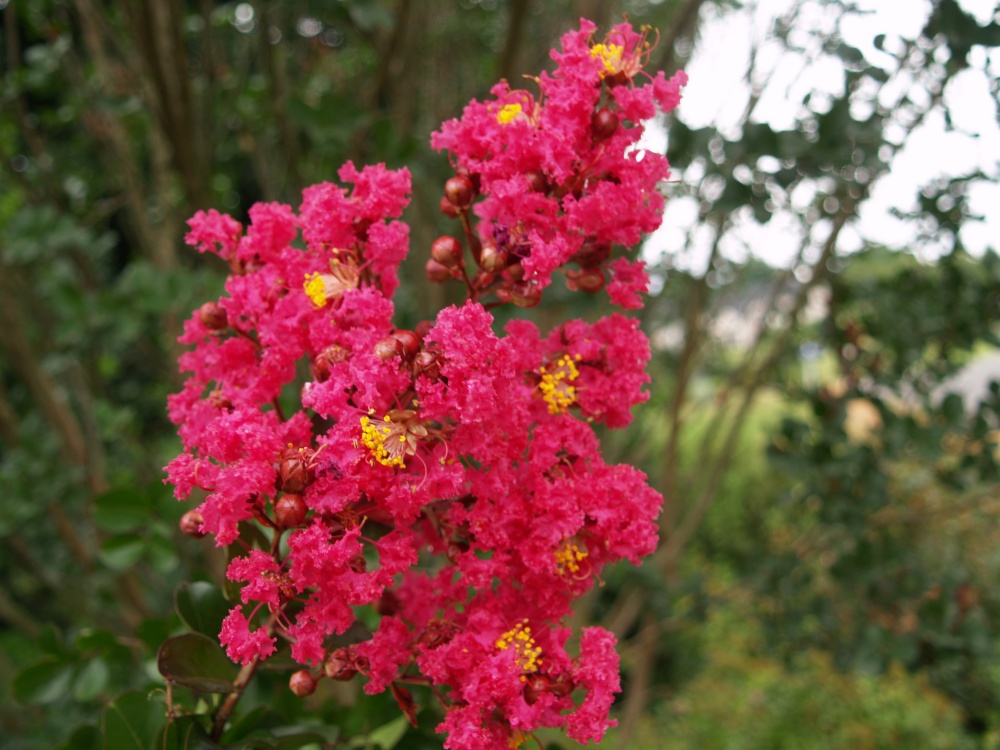
The soft wooded Franklin Tree (Franklinia alatamaha, below) has suffered repeated injury as its long branches sway in strong breezes, but though it has been chopped and hacked on, I would never consider its removal. The long lasting, late summer blooms are a favorite of butterflies, and the autumn foliage colors are marvelous. Franklinia is rarely found through nurseries, and transplants poorly, so I’ll muddle through with the one in hand.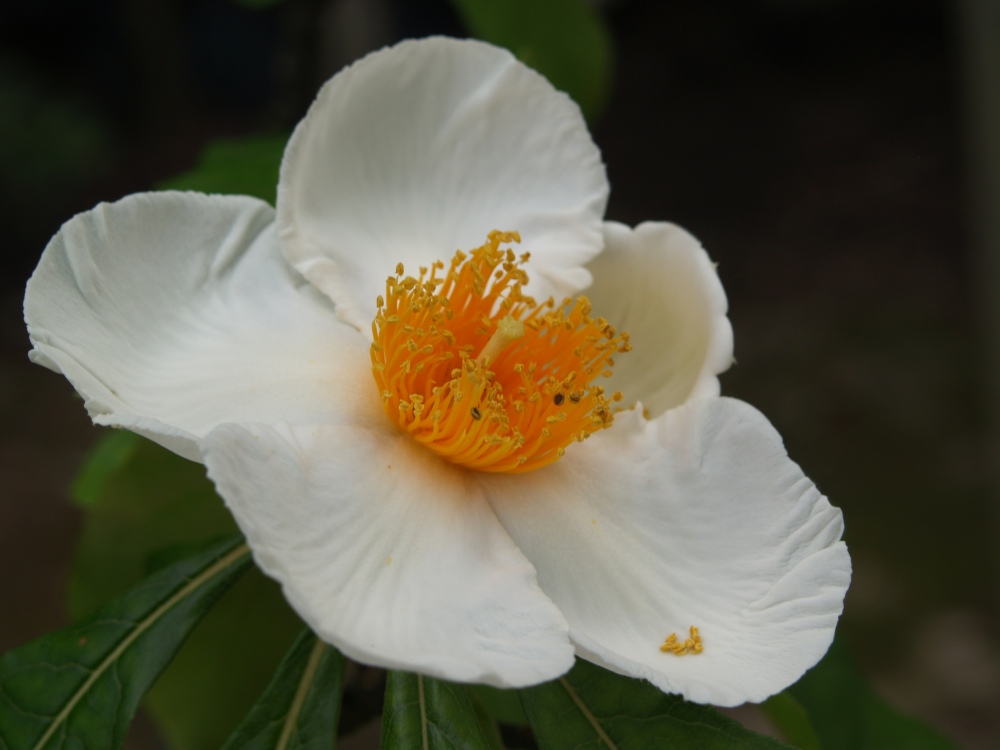
The Seven Sons Tree (Heptacodium miconioides. below) is nearly a weed, a fast growing, shrub-like, multi trunk tree with coarse foliage, and peeling bark that is not so ornamental as crapemyrtle or Stewartia, but still is of interest in the winter months. Clusters of small white blooms cover the tree late in the summer, and are favored by bees and butterflies. The autumn foliage is an ordinary yellow, but the flowers are followed by pink-purple bracts that are equally beautiful so that the tree is quite colorful from August into November. 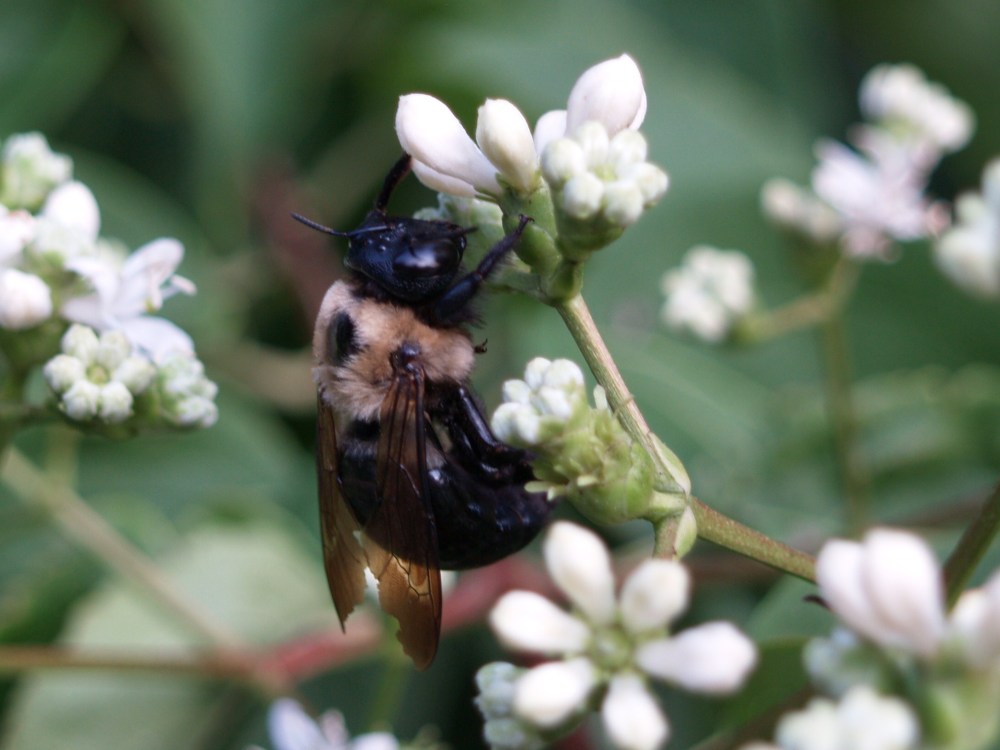
I cannot imagine the garden without the Seven Son, and though Japanese Stewartia (Stewartia pseudocamellia, below) was quite slow to become established, and for several years was a great disappointment, it has grown to become a favored tree. Its branches bend under the weight of white blooms late in the spring, and the mottled autumn foliage colors are exceptional. 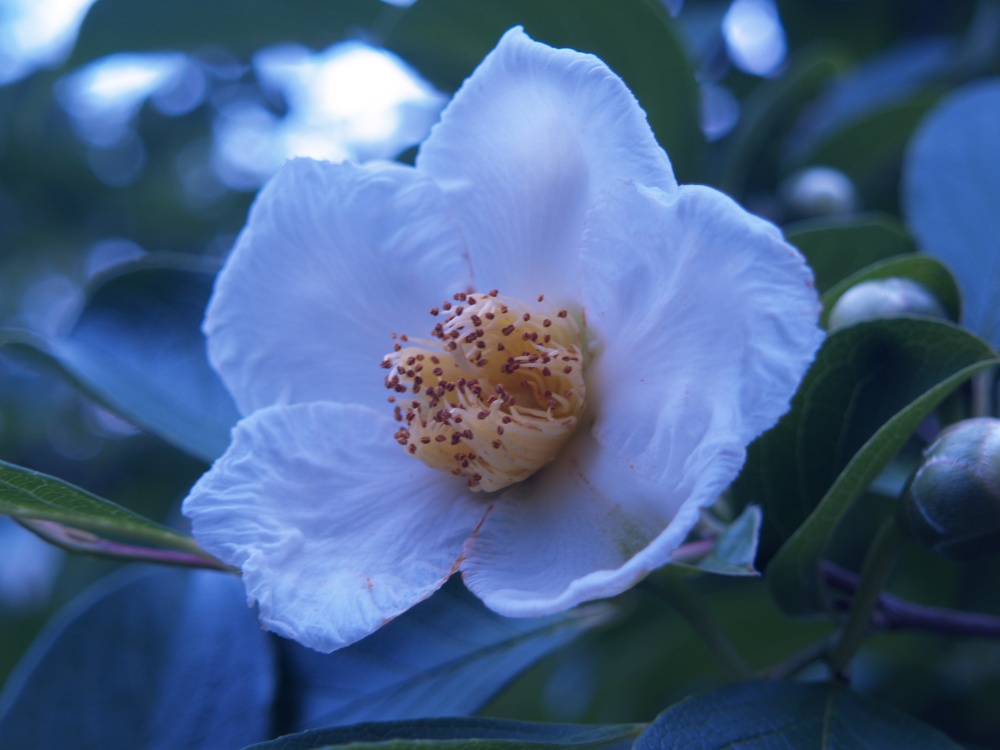
I realize that I have determined more trees to be keepers rather than suffer before the blade of the bulldozer, but there is no doubt that the redbuds must stay. ‘Forest Pansy’, ‘Hearts of Gold’, and ‘Silver Cloud’ (Cercis canadensis “Silver Cloud’, below) are treasured for their early spring blooms and colored foliage, and I would rather add than subtract from their numbers.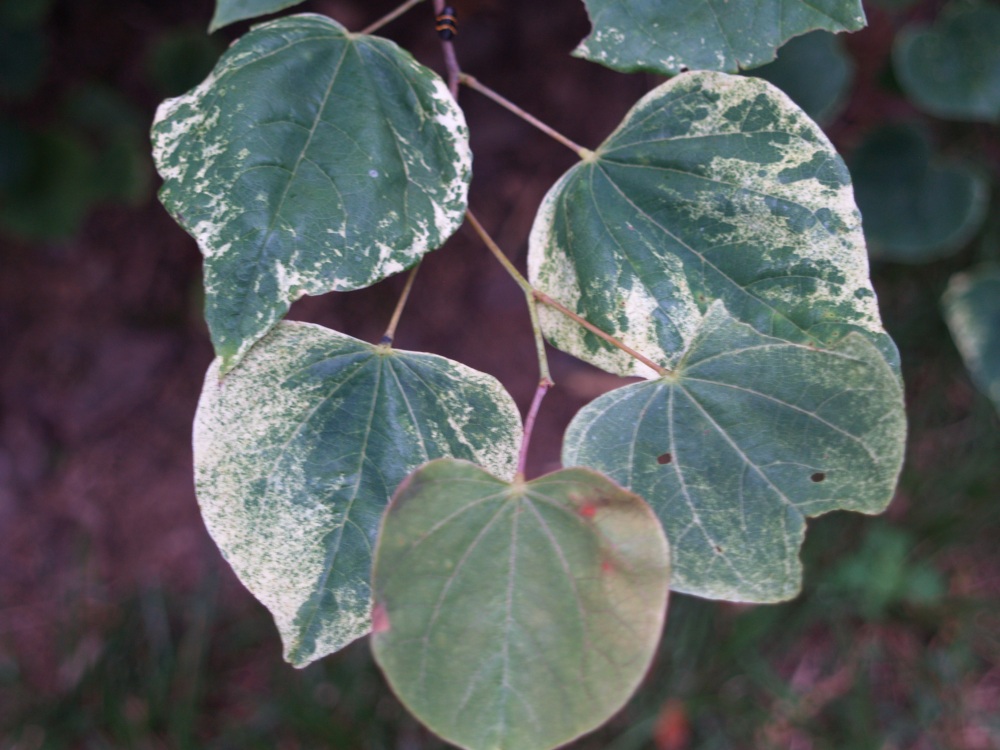
I suppose that I could drag this on for a good number of additional paragraphs. Nothing has been said yet of the Bigleaf magnolia, the southern magnolias or their early spring blooming, deciduous kin, or fringetree (Chionanthus virginica, below), or the weeping beech, katsura, or hornbeam (or the tall growing beech, katsura, or hornbeam for that matter). 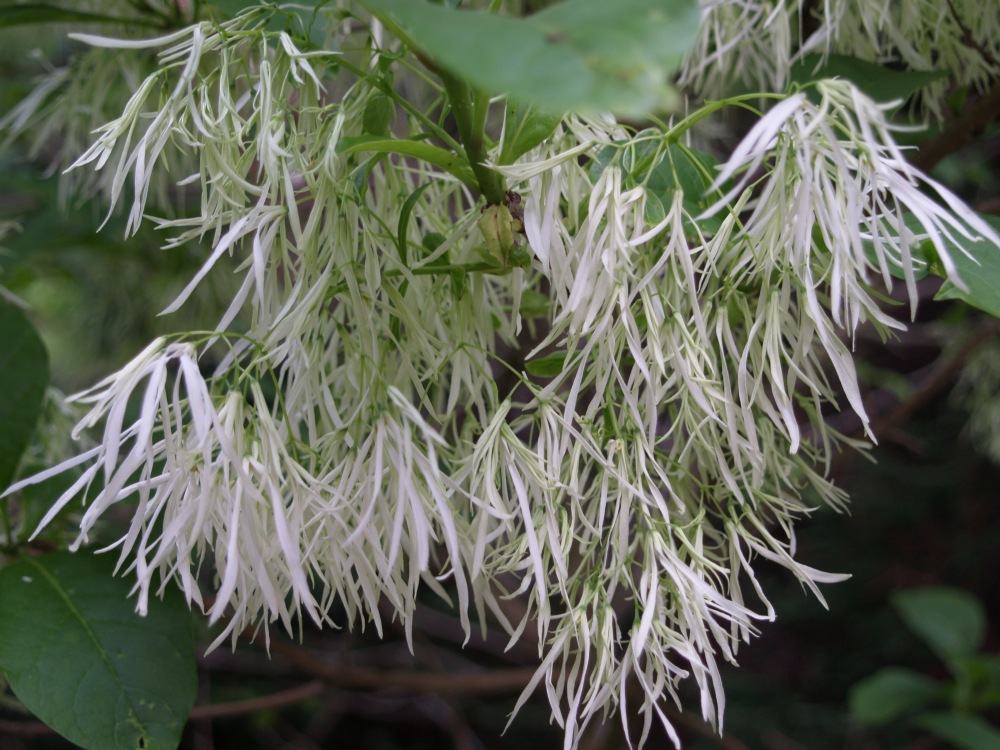
Of course I have failed to clear the slate, the garden remains full to the brim, and no new space has been opened for the Dove tree and Parrotia, or the new crapemyrtles or redbuds. Too many trees are favored, so unless a tornado roars through the garden I must be content with what I have.